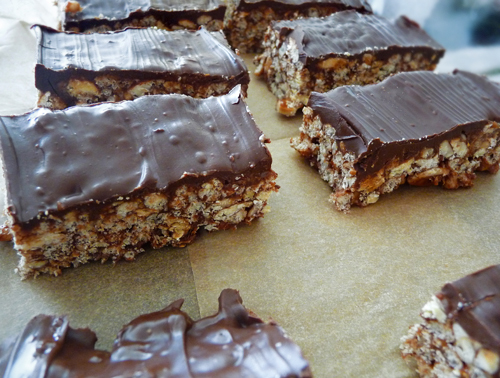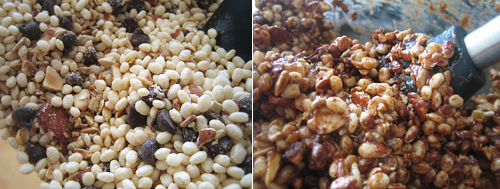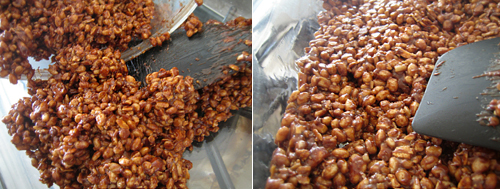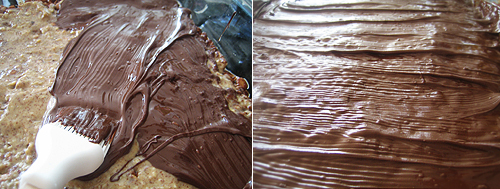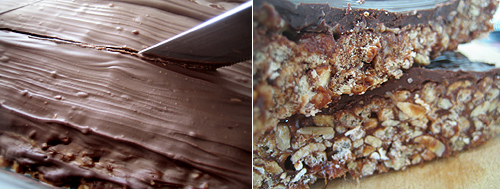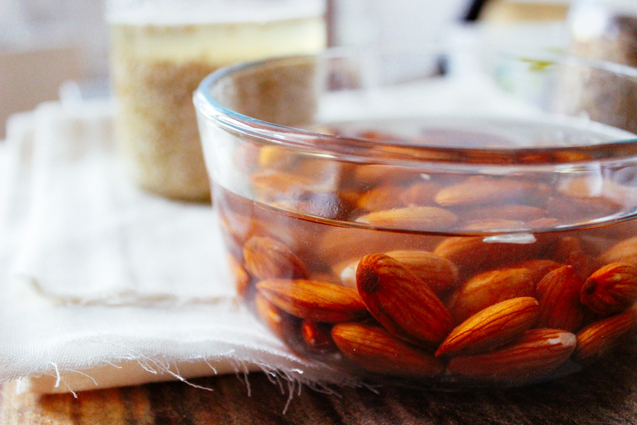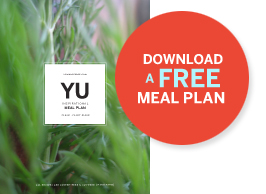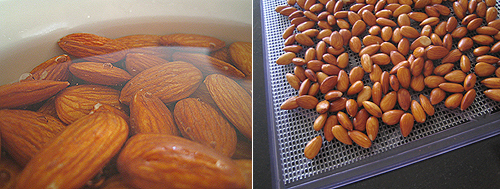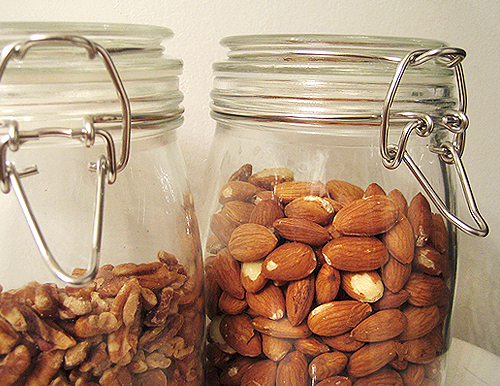My love is crazy for KitKat bars. I get it—that chocolate, that crunch, that childhood nostalgia—it’s a powerful combo. As my official taste-tester of all things edible in my household, it brings me great joy when I get the happy mouthful of feedback like “mmmwowwww, thwwwis is wwwwreawy ggwwwreat” instead of the deflating “this tastes vegan.” Well folks, these Chocolate Crunch Bars passed the test, receiving one of the greatest reviews yet—the whole tray gone in less than one day.
The salted, toasted almonds, gluten-free oats and sunflower seeds combine with melted vegan chocolate chips for a more naturally sweetened, wholesome treat than a highly-processed candy bar.
There are a few ways to make these. I often adjust this recipe, leaving out the chocolate topping, for a lighter energy bar. Try adding Spirulina Crystal Flakes for micronutrients if that’s your thing, and/or some shredded coconut. You diehard chocoholics could try cutting your bars up and dipping them almost entirely in melted chocolate. Just let them cool in the fridge on parchment paper once dipped. Have fun with it.
I have to say that Heidi Swanson planted the seed for this creation a few months ago. Her beautifully-photographed recipe book Super Natural Cooking has a tasty treat in there that uses crispy rice and brown rice syrup. Genius.
Makes: approx. 12-24 bars depending on size you like to make | Preparation Time: 35mins
Tools:
Food Processor
Double Boiler (optional, just use creativity otherwise)
Ingredients:
1 cup raw almonds
2/3 cup raw sunflower seeds
1/3 cup rolled oats (be sure to purchase gluten-free if you have a sensitivity)
1 cup organic brown rice syrup
1/4 tsp organic vanilla extract
2/3 cup unsalted raw almond butter
2 cups of organic brown rice crisps cereal (be sure to purchase gluten-free if you have a sensitivity)
1 bag of chocolate chips (dairy-free or vegan if you have sensitivities or aversions to dairy)
1/2 tsp pink Himalayan or Celtic sea salt
1 Tbsp cold-pressed coconut oil
Let’s Get Started:
First, grease bottom and sides of a medium or large glass casserole dish or brownie pan with coconut oil and set aside.
On a parchment-lined cookie sheet, spread out your sunflower seeds, almonds and oats. Toast them in an oven preheated to 325°F for about 5-7 minutes. Keep an eye on them, you don’t want them to burn, you want them to smell and look toasted.
Remove the goodness from the oven and transfer to your food processor. Add salt and pulse until just broken up (bottom, right)—not pulverized into a powder.
Transfer the contents of the food processor to a large glass bowl and add your crisp rice and 1/2 cup of vegan chocolate chips and set aside.
In a medium saucepan, pour in your brown rice syrup, add vanilla extract and 2 Tbsp of almond butter and stir over high heat until mixture starts to boil. Once it has reached a boil, remove from heat and immediately pour into your bowl of rice, nuts, seeds and chips. Mix well until thoroughly coated and chips have melted.
Transfer your mixture to your greased dish and press flat and even.
Now sometimes when I make these, I stop at this point, to keep the bars more simple. But to take them to the next level of decadence (similar to a Snickers bar), do continue reading.
Spread the rest of your almond butter in a nice layer on top of your crispiness (bottom, left) and set aside.
Using a Double Boiler, or what I construct in my kitchen by layering pots, melt your vegan chocolate chips. See bottom, right for my “double boiler.” It’s a large pot filled with boiling water on the stove, with a strainer fixed at its top that then holds a saucepan containing chips. You want the heat/steam from the bottom pot to warm the pot containing the chips. Chocolate is sensitive. If you don’t have a double boiler, whatever you rig up for melting, be very careful not to get any water in your chips, not even a drop, or the chocolate will seize and more than likely be unusable. [What to do if it seizes]
Once melted, spread your chocolate on top of your almond butter layer. I used a silicon kitchen brush here. I’m sure a cupcake icing knife, butter knife or rubber spatula would work well too.
Place your dish in the freezer for about 20 minutes or the refrigerator for about 30-40minutes. Once chocolate is hardened, cut up your bars and enjoy. Individually wrap them in parchment paper and store in an airtight glass container for on-the-go snacks.
Keep Chocolate Crunch Bars in the fridge, on the countertop or in the pantry in an airtight glass container for up to two weeks. Good luck keeping them around that long without eatin’ them up.
I made my bars in a glass container that already comes with a lid, so I can put the lid on and pop it in the fridge or pantry with ease.
